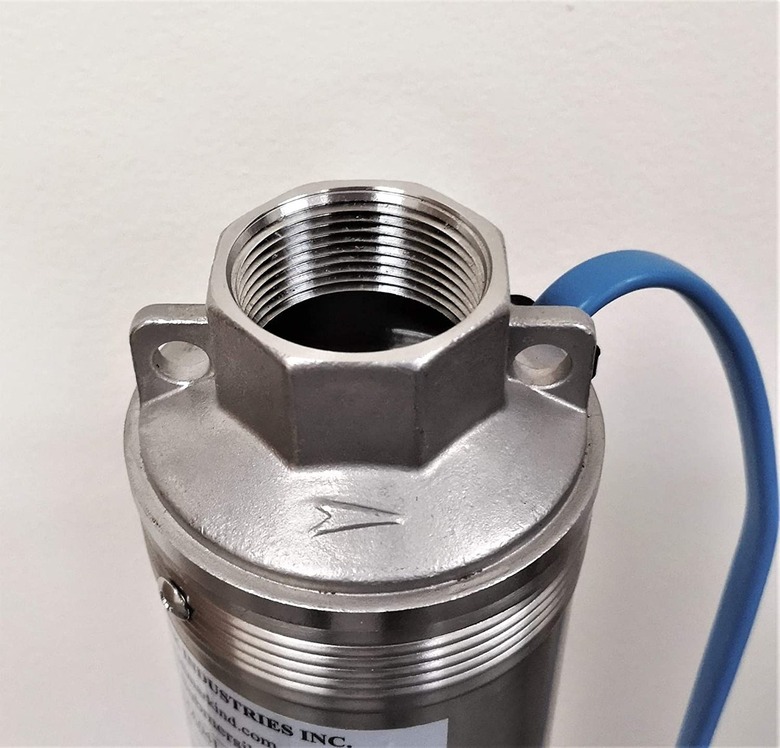Removing A Submersible Well Pump
We may receive a commission on purchases made from links.
Although you can expect eight to 15 years of reliable service from your submersible well pump, it's going to give out at some point in time. When it does, both repairing and replacing the pump will first require you to remove it from the well. This job can be tricky, especially on deeper wells of 100 feet or more. The process may seem simple enough, but the weight of the pump means the job is one best left to professionals most of the time.
Signs of Well Pump Problems
Signs of Well Pump Problems
Before you go tearing your well apart or having someone else do it for you, make sure the pump is the problem. There are many signs that your pump is performing poorly. One is the presence of dirt or air in your water. If your sink or showerhead spit at you during use, your pump is likely sucking in air instead of water. This can mean a low water level or a broken pipe, but it's also a sign of well pump problems.
Strange noises coming from the well also indicate a pump problem as does a pump that runs constantly. Even if you don't always hear it, you'll know your pump is running all the time if your electric bill suddenly and drastically increases. Of course, a pump that fails to run at all is also in trouble and may need to be replaced as well.
Well Pump Removal Process
Well Pump Removal Process
Before starting the pump removal process, your contractor must shut off the power. This protects him from getting an electrical shock and stops the pump from running while it's dry, which can ruin any chance at repair rather than replacement. Next, he'll remove the well cap and insert a specially threaded T-handle tool in the well.
When the tool reaches the pitless adaptor, which routes water from the pump to the plumbing system, the T-handle gets screwed into place on the adaptor. Once threaded into place, your contractor will pull the T-handle back up out of the well. He will then pull the adaptor out of the well along with some flexible PVC pipe (some wells have polyethylene, or PE, pipe). From there he'll keep on going, pulling this pipe out of the well until your well pump comes out with it. The deeper your pump, the more line your contractor will have to pull out.
Well companies don't always pull pipes by hand, however. Some wells use galvanized pipe instead of PVC. Galvanized pipe lasts longer and can go deeper into the well. Unfortunately, because it is heavy and doesn't flex, pulling a submersible pump plumbed with galvanized pipe is a harder job that usually requires a crane or a mechanical lift of some sort.
Can I Pull My Own Well Pump?
Can I Pull My Own Well Pump?
If your well is less than 150 feet deep and utilizes PVC pipe, you may be able to pull your submersible well pump yourself. Expect the pump and any water in the line to weigh at least 150 pounds, however. And you'll want to hang on tight to that weight — if you drop the pump down in the well you'll need a pro to fish it back out.
Keep in mind that the weight goes up if you have galvanized pipe. The weight also increases as the depth of your well increases. A pump in a deep well with galvanized pipe can easily weigh 300 pounds or more and can't be lifted by hand. It's far easier and safer to hire a well company to pull the pump for you using their equipment.
You can help the well company by making sure they have clear access when they come to pull the pump. Trim or remove any low-hanging branches and shrubs around the well to ensure the company can get a crane and other necessary equipment onto the property.
